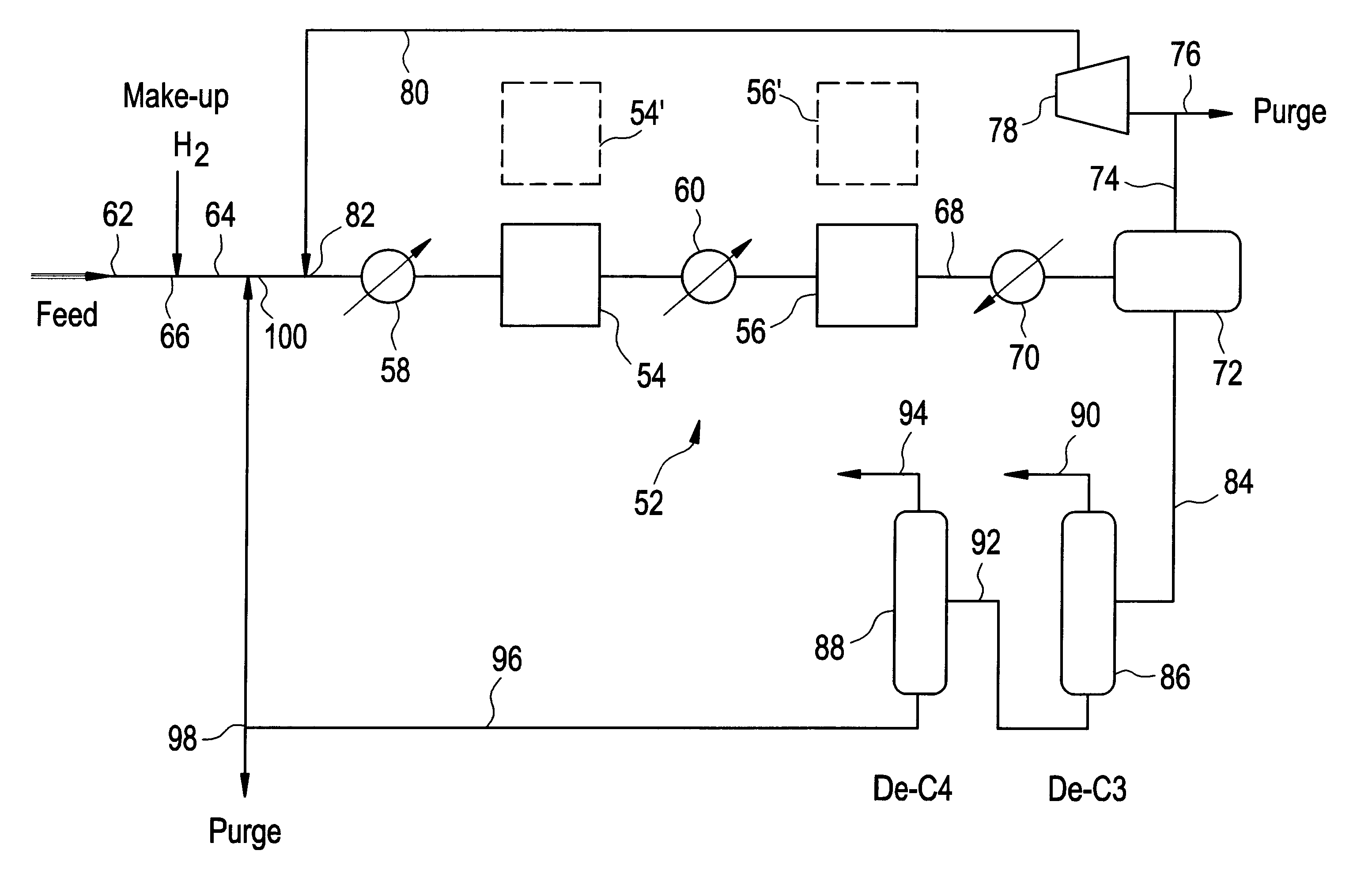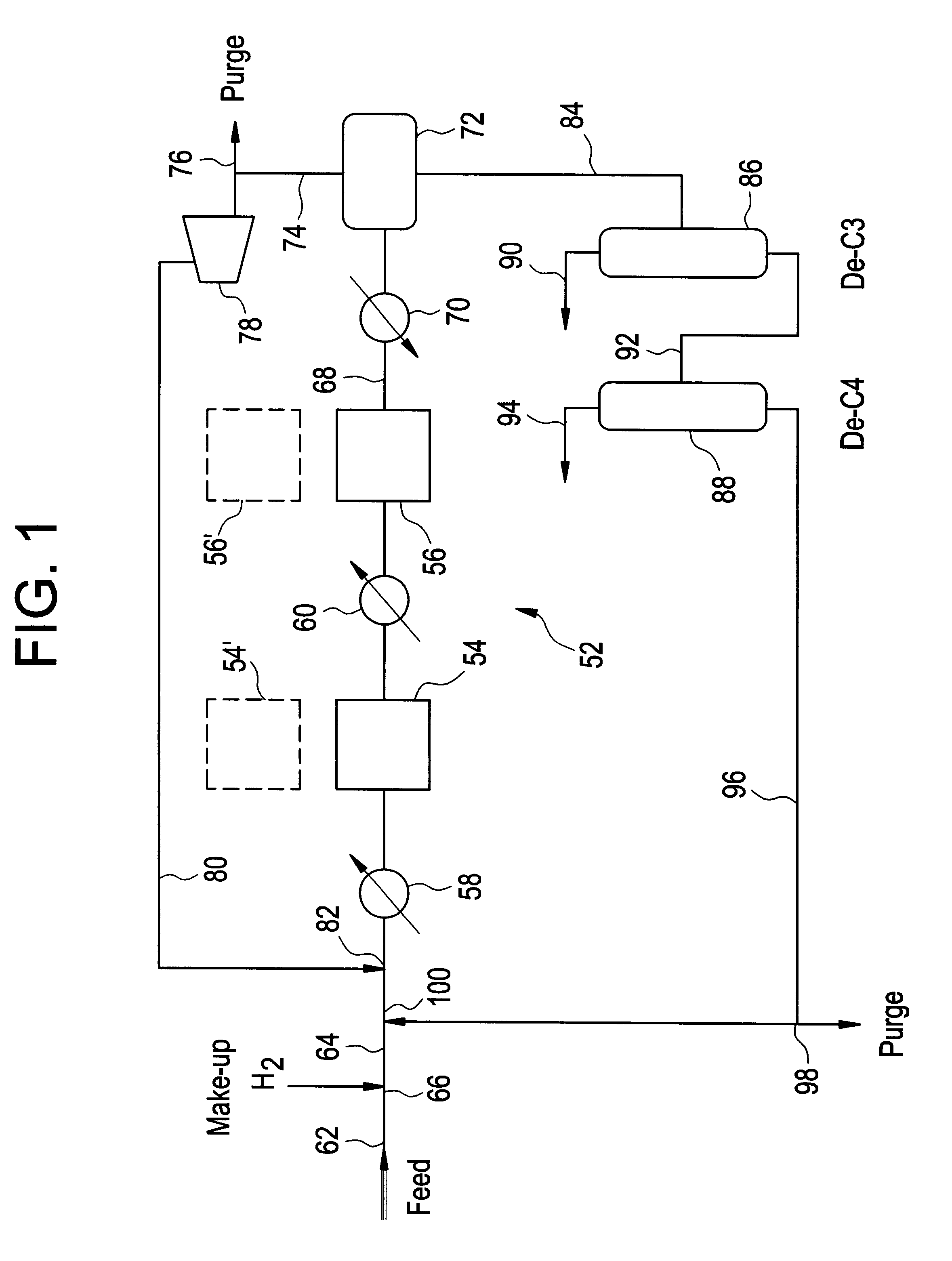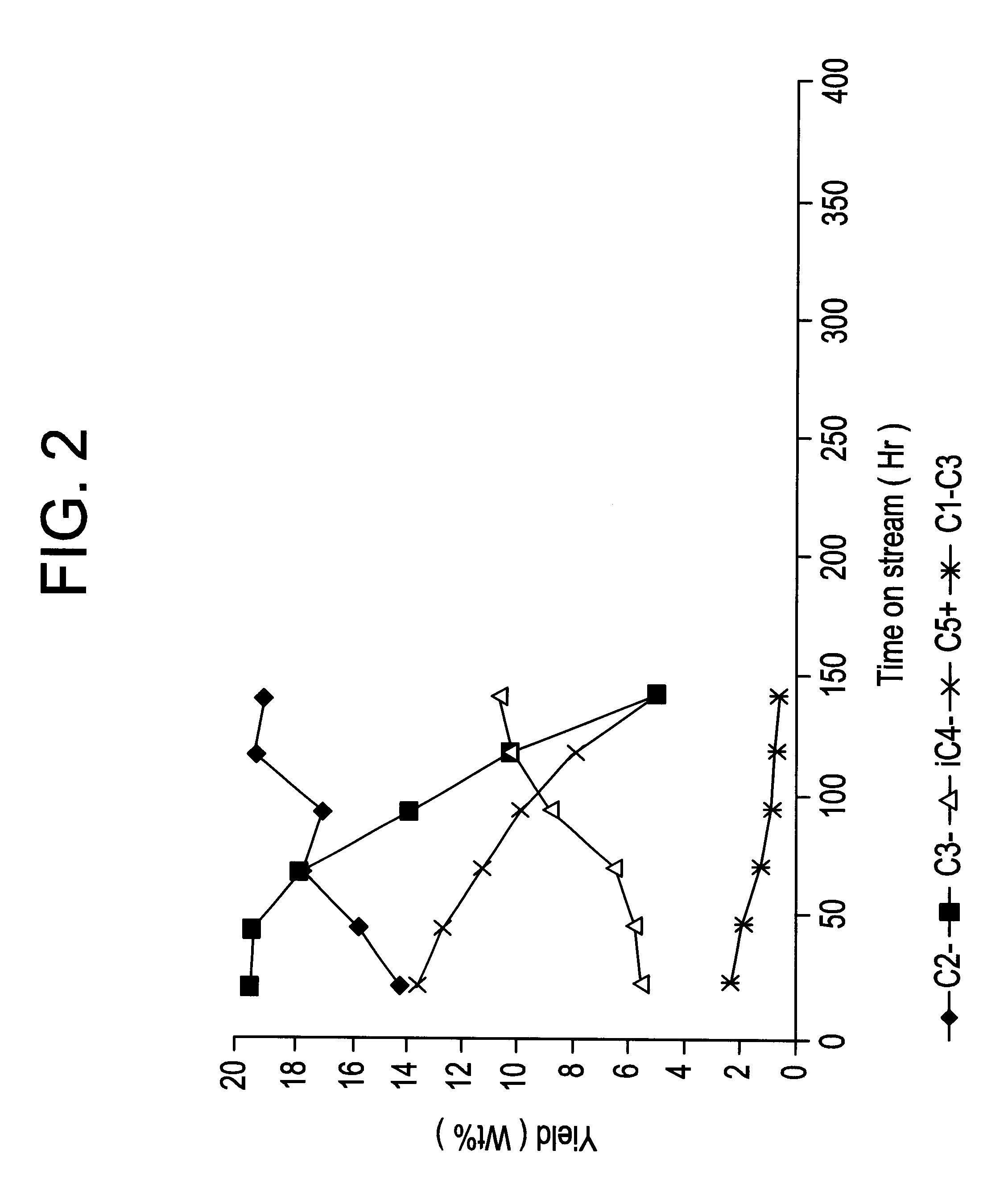Production of olefins
- Summary
- Abstract
- Description
- Claims
- Application Information
AI Technical Summary
Benefits of technology
Problems solved by technology
Method used
Image
Examples
example 2
In this Example, the same feedstock for Example 1 had the same amount of ethylene added to the feedstock before the olefin cracking process. In other words, the butene / ethylene molar ratio was 1. In addition, hydrogen was added to the feedstock. The partial pressure of the hydrocarbons, including ethylene, was 1.5 bar and the partial pressure of the hydrogen was 3.5 bar, yielding a total feedstock pressure of 5 bara. The combined feedstock / ethylene was fed at a weight hourly space velocity (WHSV) of 13 h.sup.-1 and at a temperature of 560.degree. C. over the same catalyst employed in Example 1. The composition of the various components in the effluent was detected over increasing time on stream and the results are shown in FIG. 3 and table 2. It may be seen from FIG. 3 and Table 2 that the addition of ethylene to the hydrocarbon feedstock tends to increase the propylene yield to around 9 wt % in the effluent. This yield decreases over time, but as a reduced rate as compared to Examp...
PUM
 Login to View More
Login to View More Abstract
Description
Claims
Application Information
 Login to View More
Login to View More - R&D
- Intellectual Property
- Life Sciences
- Materials
- Tech Scout
- Unparalleled Data Quality
- Higher Quality Content
- 60% Fewer Hallucinations
Browse by: Latest US Patents, China's latest patents, Technical Efficacy Thesaurus, Application Domain, Technology Topic, Popular Technical Reports.
© 2025 PatSnap. All rights reserved.Legal|Privacy policy|Modern Slavery Act Transparency Statement|Sitemap|About US| Contact US: help@patsnap.com



